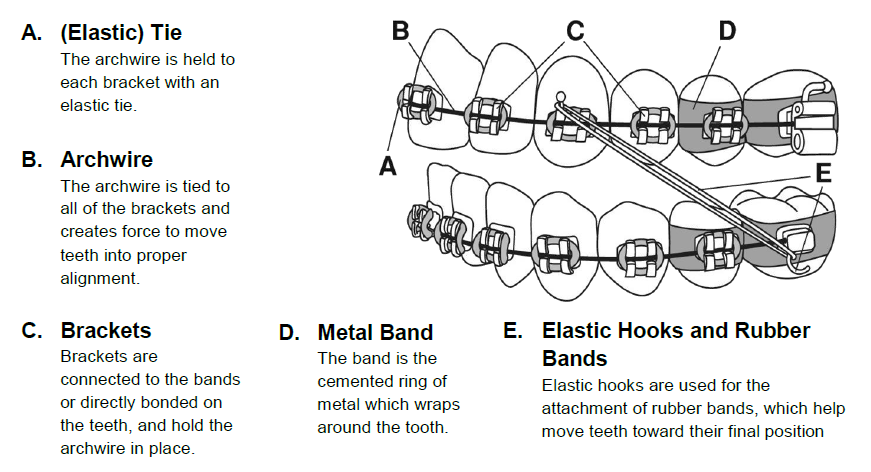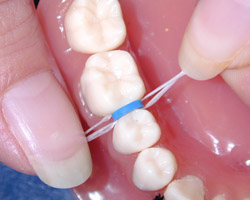Traditional and Ceramic Braces
True emergencies with braces are rare, but if something does happen, please contact our office right away. Letting us know as soon as possible helps us schedule time to complete any necessary repairs and keep your treatment on track.
Even if you already have an upcoming appointment, please call us right away if something is broken or needs fixing—we may need to change your scheduled visit.
If you need help describing an issue, please use the diagrams below to identify the parts of your braces or aligners.

Clear Aligners

Braces

General Soreness and Irritation
It’s normal to feel some soreness in your mouth and teeth for the first 3 to 5 days after getting braces. This tenderness is temporary and can usually be managed with over-the-counter pain relief—such as what you’d take for a headache.
Your lips, cheeks, and tongue may also feel irritated during the first week or two as they adjust to the new braces. To help with this, you can apply orthodontic wax to the brackets to reduce rubbing and discomfort.
You may also notice small sores in your mouth as it adjusts. This is common and can be soothed by rinsing with a warm saltwater solution (mix 1 teaspoon of salt in 8 ounces of warm water and rinse thoroughly).
If your jaw feels sore, a warm compress or heating pad can help relax the muscles and ease the discomfort.
Pokey Wire
Sometimes, a wire from your braces may cause irritation. Here’s what you can do at home to feel more comfortable:
Gently move the wire away from the sore area using a cotton swab or pencil eraser.
If that doesn’t work, cover the wire with a small piece of orthodontic wax to prevent rubbing.
If the wire is sharp or painful, you can carefully trim it using clean nail clippers or scissors that have been sterilized with rubbing alcohol.
For a step-by-step demo, the video on how to safely clip a wire at home.
Loose Brackets or Bands
If a bracket or wire becomes loose, please contact our office right away so we can schedule a repair and keep your treatment on track.
In some cases—especially after hours or over a weekend—you may need to take temporary steps at home:
If a wire is causing discomfort, you can trim it with clean fingernail clippers that have been sterilized with rubbing alcohol.
If a bracket comes off, you may need to slide it off the wire or leave it in place until we can see you.
For guidance, please watch our video on how to safely handle a loose bracket or wire at home.
Difficulty Turning Expander
Having trouble turning your expander? Don’t worry—it happens from time to time.
Be sure to:
Insert the expander key all the way into the hole.
Always turn the key toward the throat.
If you’re unsure or something doesn’t feel right, check out the video for helpful tips and a demo of how to do a proper turn.
And as always, feel free to contact us if you need extra help!
Forsus Springs or Herbst Arms
If a spring on your Forsus appliance or Herbst arms comes loose, don’t worry—this can sometimes be fixed at home.
Watch the video tutorial for a step-by-step demo on how to reattach the spring.

Lost Separators
It’s common for a separator to fall out during treatment, so there’s no need to worry!
Just contact our office to see if it needs to be replaced. We’ll let you know the next steps and help ensure everything stays on track.
You can also watch this instructional video to learn how to replace it at home if needed.
